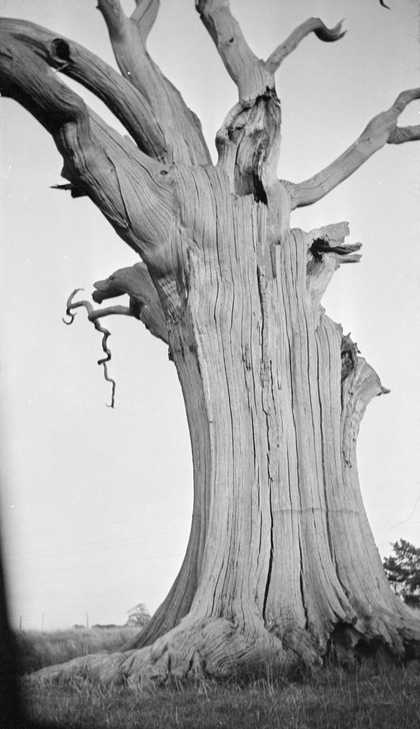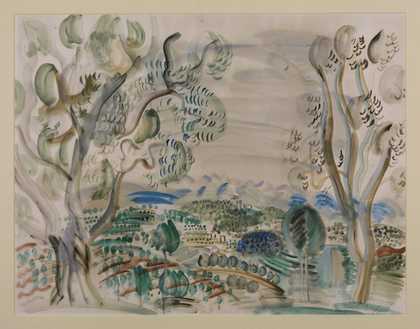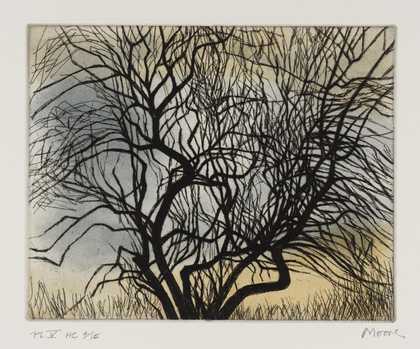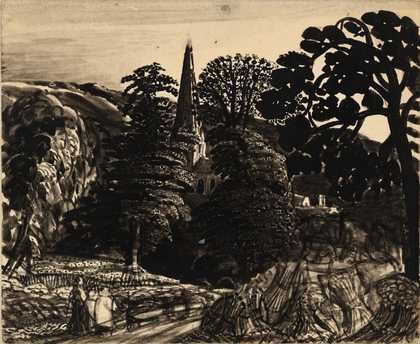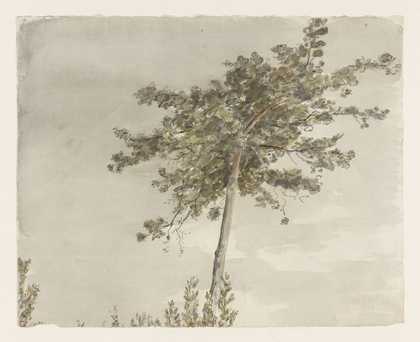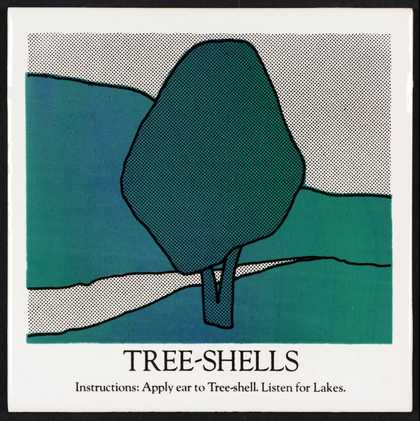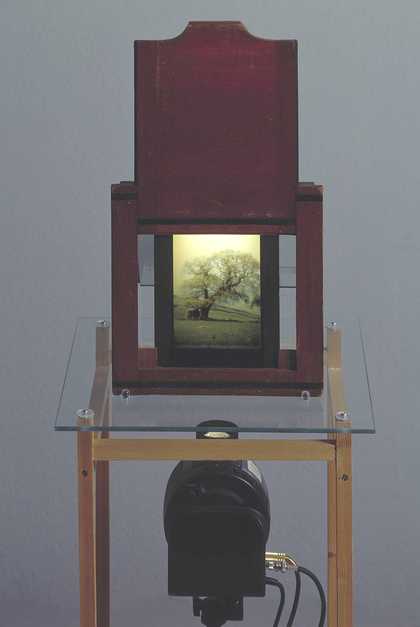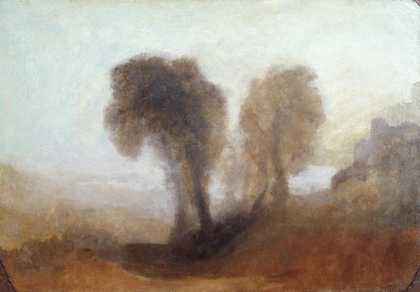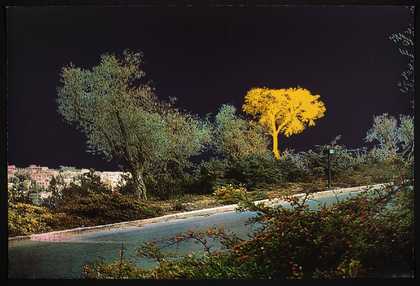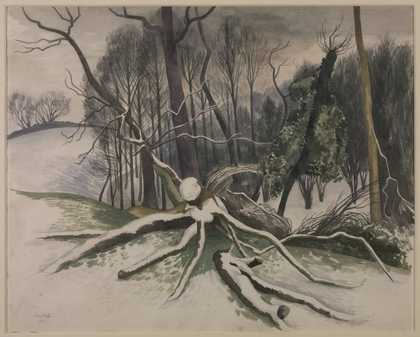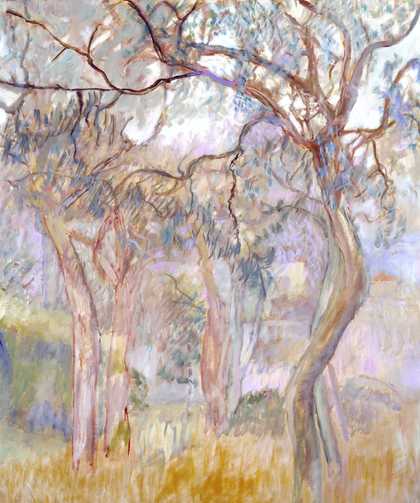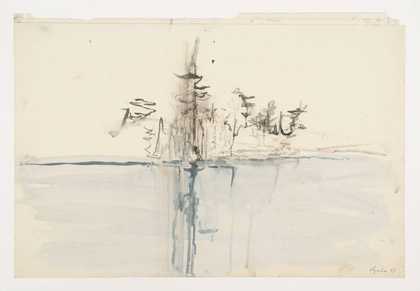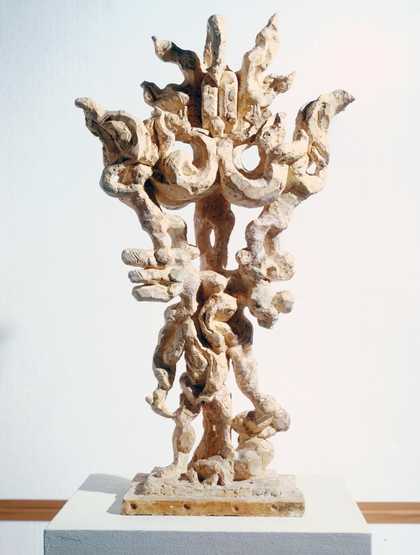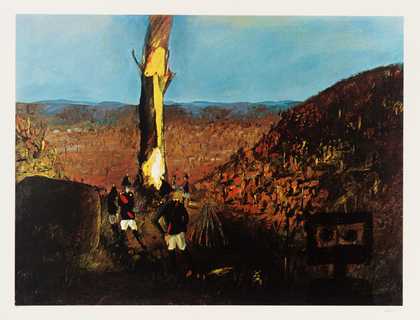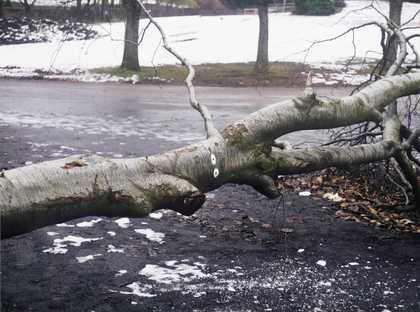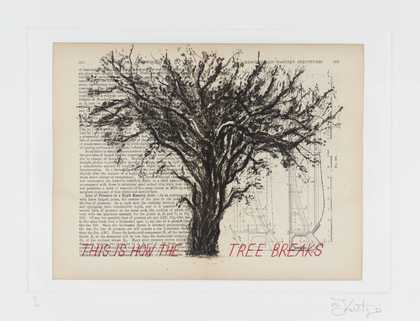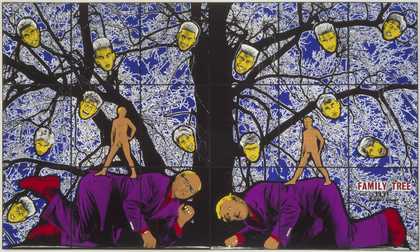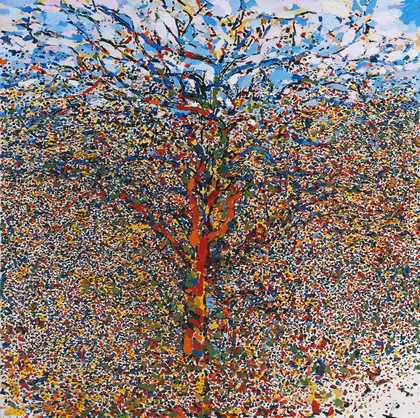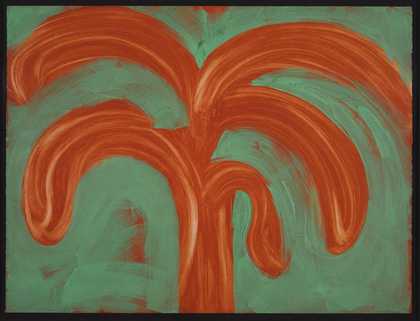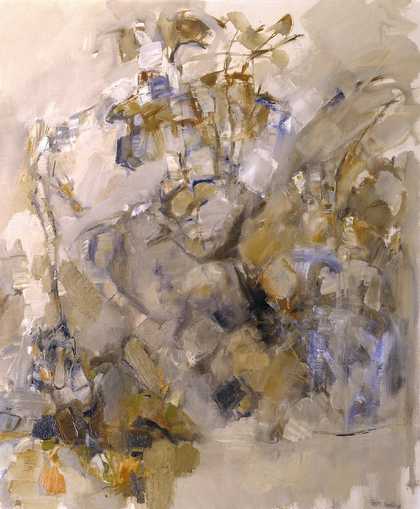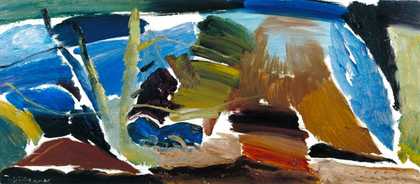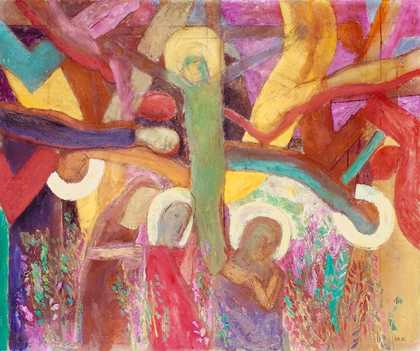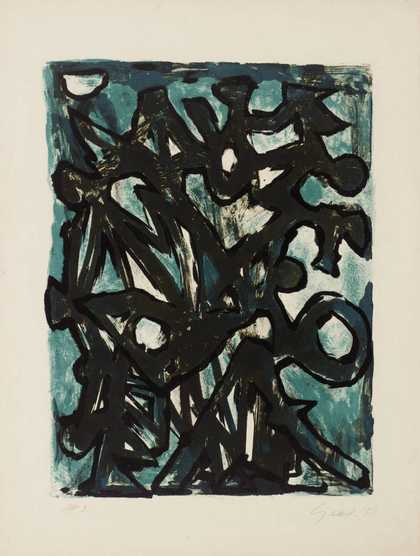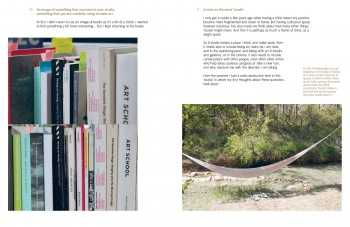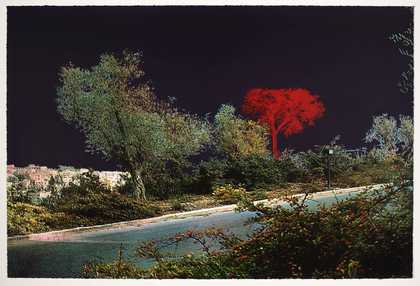
Menashe Kadishman
[title not known] (1974)
Tate
Introduction
Trees as a theme in art – pretty straightforward right? Think again … explore some the surprising ways artists have been inspired by trees and get some ideas of your own tree-themed project.
Trees Please!
This is one of a series of ancient trees that artist Tacita Dean chose to photograph. It is one of the largest and oldest complete oak trees in England. Dean photographed the tree in high resolution and the photograph was printed and presented on a large scale, giving us the opportunity to examine its features in detail. She also painted out the landscape surrounding the tree with white paint, which makes us concentrate on its details without the distraction of the background. We look closely at the texture of its bark, the gnarled knuckles of its roots, the way its branches spread and feel that we 'get to know' the tree – in the way that we gaze at portraits of people to work out what they might be like. So this is a kind of tree portrait.
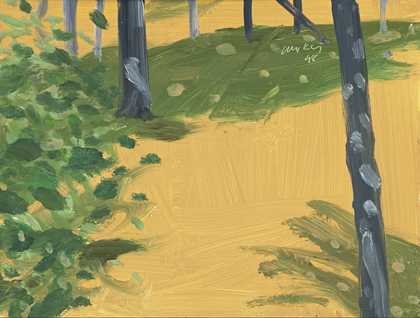
Alex Katz
Green Shadow #2 (1998)
ARTIST ROOMS Tate and National Galleries of Scotland

Alex Katz
3 PM, November (1997)
ARTIST ROOMS Tate and National Galleries of Scotland
Alex Katz's representations of trees are very different. They look more like general impressions of trees, rather than lovingly composed individual 'portraits' as in Dean's studies. Katz's cropping of the images (with just the turnks showing or the branches coming in from the side of the picture) have a snapshot feel. They seem delicate, fragile and transient; captured for the patterns or shadows they create rather than to record the details of their features.
Whether detailed depictions of single trees or the impression of groups of trees in landscapes or woods, have a look at some of the ways artists have depicted trees in sketches, prints and paintings:
Trees feature in Peter Doig’s landscapes. Figures and buildings in his work are often partially viewed through tree branches or surrounded by a forest of trees. It is the trees that create the essential, often eerie, atmosphere of his paintings and prints.
Trees with Atmosphere
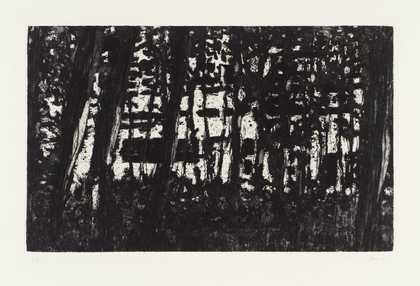
Peter Doig
Concrete Cabin (1996)
Tate
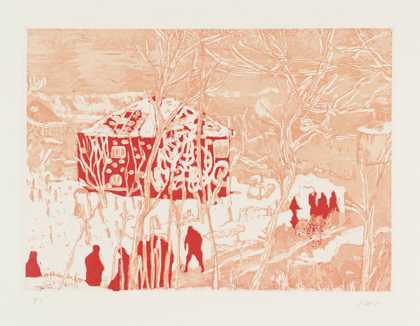
Peter Doig
Red House (1996)
Tate
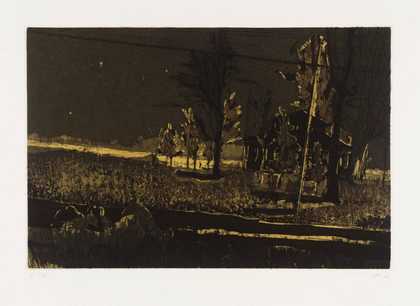
Peter Doig
Daytime Astronomy (1997)
Tate
Martin Boyce's neon trees in his installation from ‘Our Love is Like the Flowers, the Rain, the Sea and the Hours’ 2002 also evoke a sense of atmosphere. The scene looks like a park with its typical simple park-like bench and wire bin. The lit-up trees, which are suspended so they hover just above the floor, create a mood of magic but also sadness. Boyce commented that he wanted to suggest:
... that same feeling, of a space you might have occupied as a teenager, that place you find for yourself. Exterior spaces like a park at night. The kind of urban park, that gap between the city and the suburbs, or gaps inside the city.

Martin Boyce
from ‘Our Love is Like the Flowers, the Rain, the Sea and the Hours’ (2002)
Tate
Have a look at more artworks that explore the atmospheric qualities of trees. As you browse the slideshow, think about the way the images make you feel, and how the artists have used media, techniques, compositions and colours to put this across.
Trees with Attitude (and Meaning)
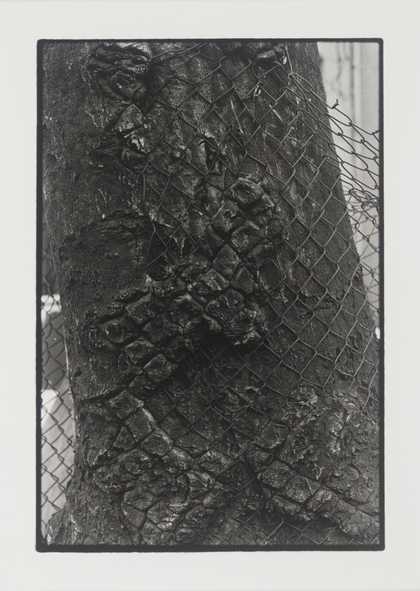
Zoe Leonard
Detail (Tree Fence) (1998, printed 1999)
Tate
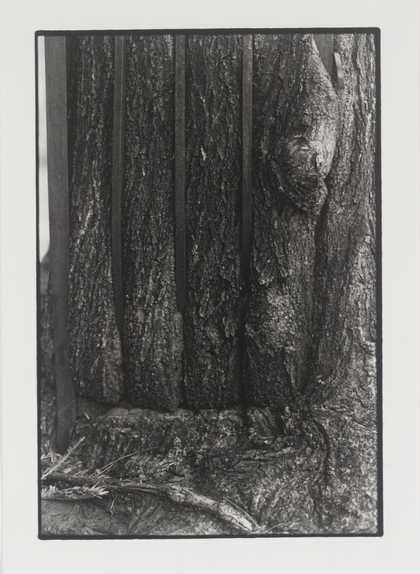
Zoe Leonard
Tree Fence, 6th St. (Close-up) (1998, printed 1999)
Tate
Artist Zoe Leonard took a series of photographs of trees 'bursting out of' fences in New York in 1998. The photographs are close-up views of tree trunks which have grown around and partially swallowed sections of iron railings. She saw the trees as melancholic symbols of being trapped – but there is also an element of optimism in that rather than shrivelling up or letting thesleves be enclosed they are working out a way of dealing with their situation.
When I returned to New York, the tree outside my window attracted my attention in a whole new way. Once I had photographed it, I began to notice similar trees throughout the city ... I was amazed by the way these trees grew in spite of their enclosures – bursting out of them or absorbing them. The pictures in the tree series synthesize my thoughts about struggle. People can’t help but anthropomorphize. I immediately identify with the tree. At first, these pictures may seem like melancholy images of confinement. But perhaps they’re also images of endurance.
Zoe Leonard
Trees in urban settings are also the subject of Keith Coventry's sculpture. The sculpture is cast from the thin trunk of a young tree that has been broken in half and its wooden support. The tree looks like the sort of tree we see growing out of concrete pavements in shopping centres or housing estates. The broken, stunted trunk is a remnant of an act of vandalism. By casting it in bronze, a material often used for commemorative statues, the sculpture looks like a memorial. As its title suggests, the sculpture commemorates the moment when the sapling was struck by vandals, its trunk and support having snapped at a point beyond which regeneration is impossible. By bringing these damaged fragments of public spaces into an art gallery, Coventry highlights the gap between the vision of an ideal, (making places pleasant by growing trees there) and the reality of urban experiences.
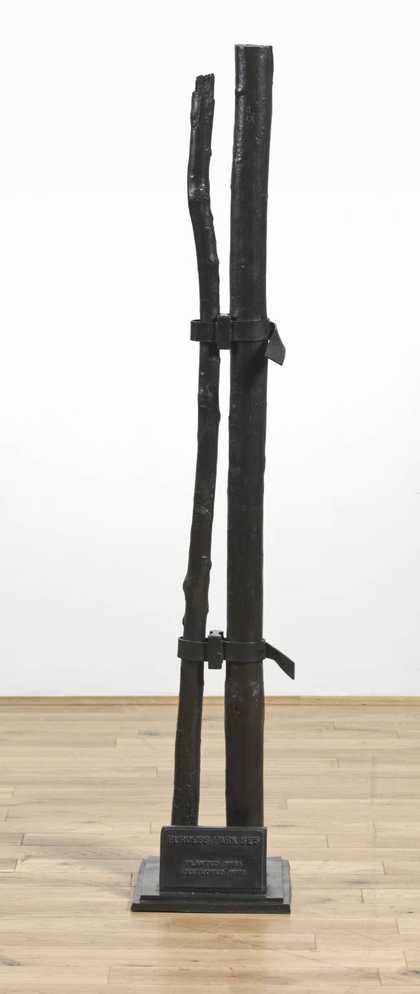
Keith Coventry
Burgess Park SE5, Planted 1983, Destroyed 1988 (1994)
Tate
Like Keith Coventry, Chinese artist Ai Weiwei also uses a tree to symbolise aspects of society. Tree 2010 is a monumental sculpture assembled from the dry, dead branches, roots and trunks of lots of different species of tree that Ai Weiwei gathered from across the southern region of China. The sculpture mimics the form of a real tree, although the cuts and joins are visible. Ai WeiWei's work often explores complex social and political issues affecting contemporary China. The dry wood used to make Tree draws attention to the country’s rapid urbanisation which has resulted in damage to the natural environment and the suppression of traditional culture. Also, the act of bringing together numerous individual branches to create a whole can be read as symbolic of the relationship between the individual and society.
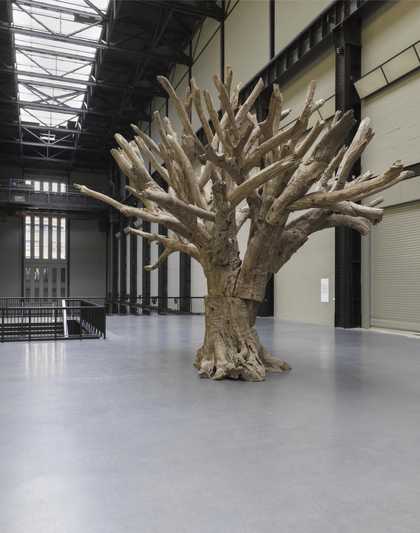
Ai Weiwei
Tree (2010)
Tate
This tree-like strucuture is actually a reconstruction of a sculptural body-costume worn by artist Lee Bul during a performance at the National Museum of Contemporary Art in Seoul in 1989. The shapes that intertwine to make the costume suggest monstrous animals, but also tree roots. Hidden in the costume are a series of microphones that record her movements as she performs. Lee Bul's sculptures and performances deconstruct ideals of the human body.

Lee Bul
Untitled (Cravings White) (1988, reconstructed 2011)
Tate
Explore more trees with attitude! Discover how trees have been used express ideas, meanings – and make a point.
Textures, Shapes and Abstraction
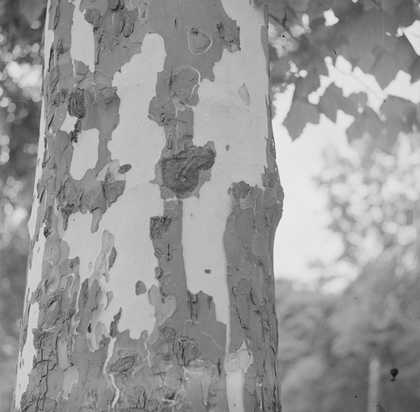
Nigel Henderson
Photograph showing detail of bark on a tree trunk ([c.1949–c.1956])
Tate Archive

Kunié Sugiura
Tree Trunk Bark 3 (1971)
Tate
The textures of tree trunks and foliage and the shapes found in their branches are the focus of many artists. These are often used as the starting point for abstract artworks.
Textures and patterns
In Nigel Henderson's photograph of a tree trunk, the patterns formed by its peeling bark echo the patches of light shining through the leaves above. Japanese artist Kunié Sugiura's beautiful detailed study of tree bark becomes a delicate all over abstract pattern. The delicate shades of grey look like dabbed watercolour or marks made with a pencil.
Bomberg's painting is a very different take on texture. He was inspired by the bright mediterranean light while on holiday in Cyprus, and painted these trees en plein air (outdoors and on-the-spot). But he didn't want to create a realistic depiction of what the landscape looked like, his aim was to reveal the underlying structure of the land and give a sense of its character and spirit. It is painted with loose, fluid brushstrokes and the range of textures and vigorous marks give the painting an overwhelming sense of movement and vitality
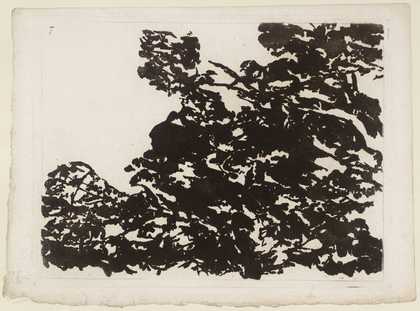
Alexander Cozens
7. A High Foreground, That Is to Say, a Large Kind of Object, or More than One. Near the Eye. ()
Tate
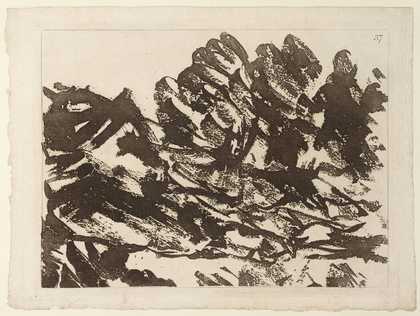
Alexander Cozens
37. [title not known] ()
Tate
It's hard to belive that Alexander Cozens's abstracted depictions of trees in landscapes were made over 200 years ago. The textured images are not based on real places but made using ink blots. Cozens blotted ink on a page and then worked into the blots to create the impression of trees and rocks.
Shapes
Working at the beginning of teh twentieth century, artist Piet Mondrian was a pioneer of abstraction. He is known for his paintings that combine simple geometric shapes with primary colours. But although his work looks completely abstract, he was originally inspired by the shapes formed by tree branches.

Piet Mondrian
The Tree A (c.1913)
Tate
The organic curves of Richard Deacon's sculpture suggest various things. The title is taken from the Biblical phrase 'He that hath ears to hear let him hear' and relates to Deacon's interest in the way eyes, ears and mouths channel our perceptions of the world. But the shape of the sculpture also resembles forms found in nature, echoing the shape of a hilly landscape as well as the shapes of clumps of trees and tree roots. The sculpture is made from wood and the oozing resin and rings in the wood are reminders that this material was itself once alive, and part of nature.
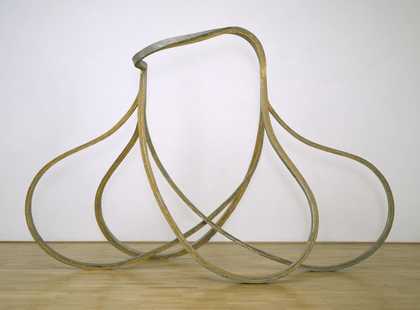
Richard Deacon
For Those Who Have Ears #2 (1983)
Tate
Explore more artworks inspired by the shapes, patterns and textures of trees:

